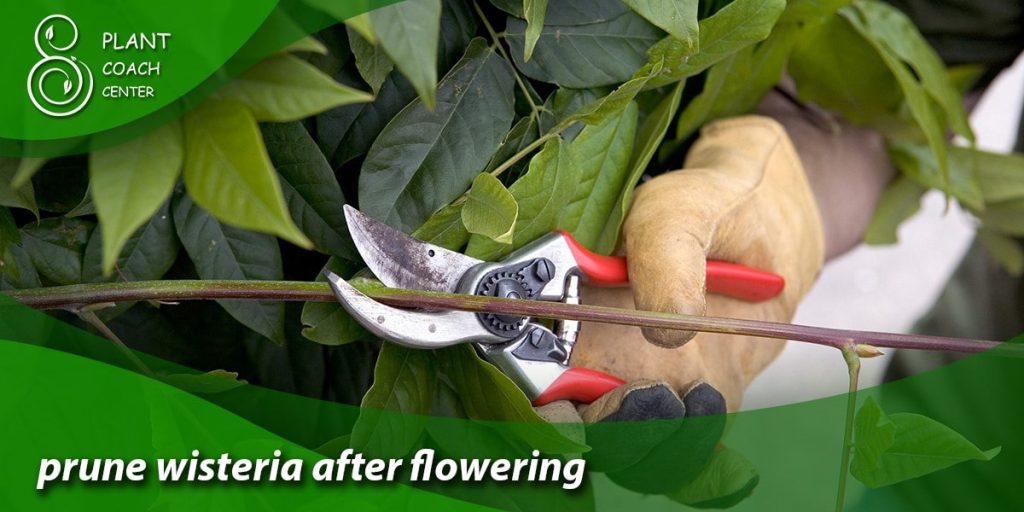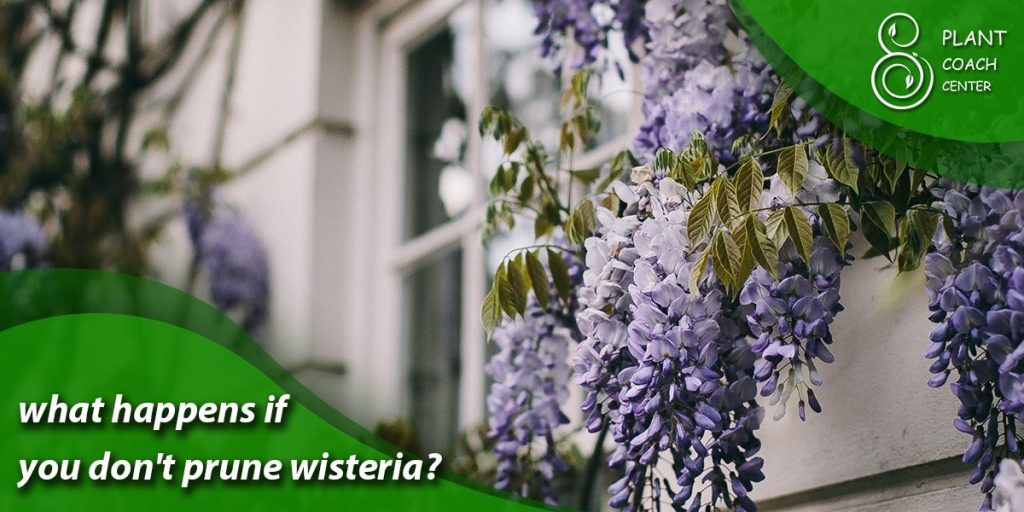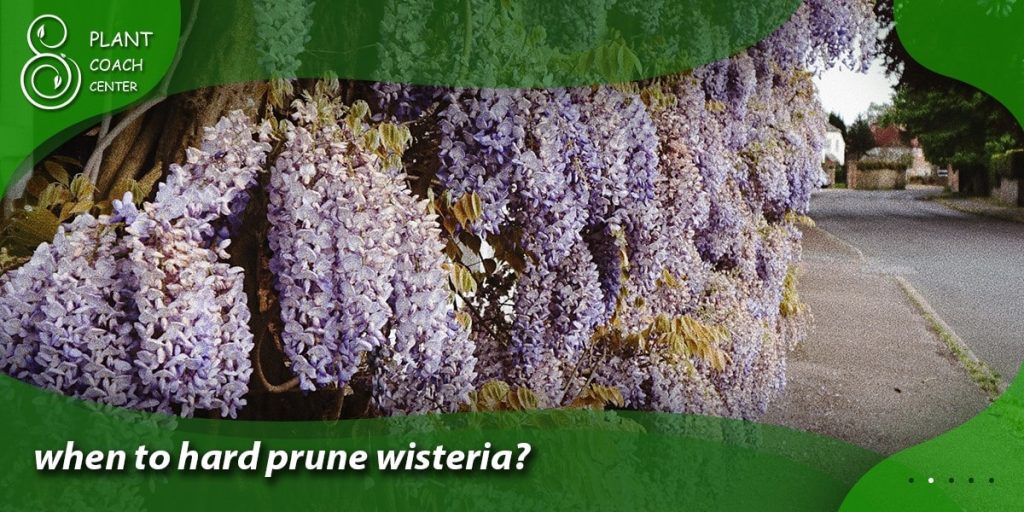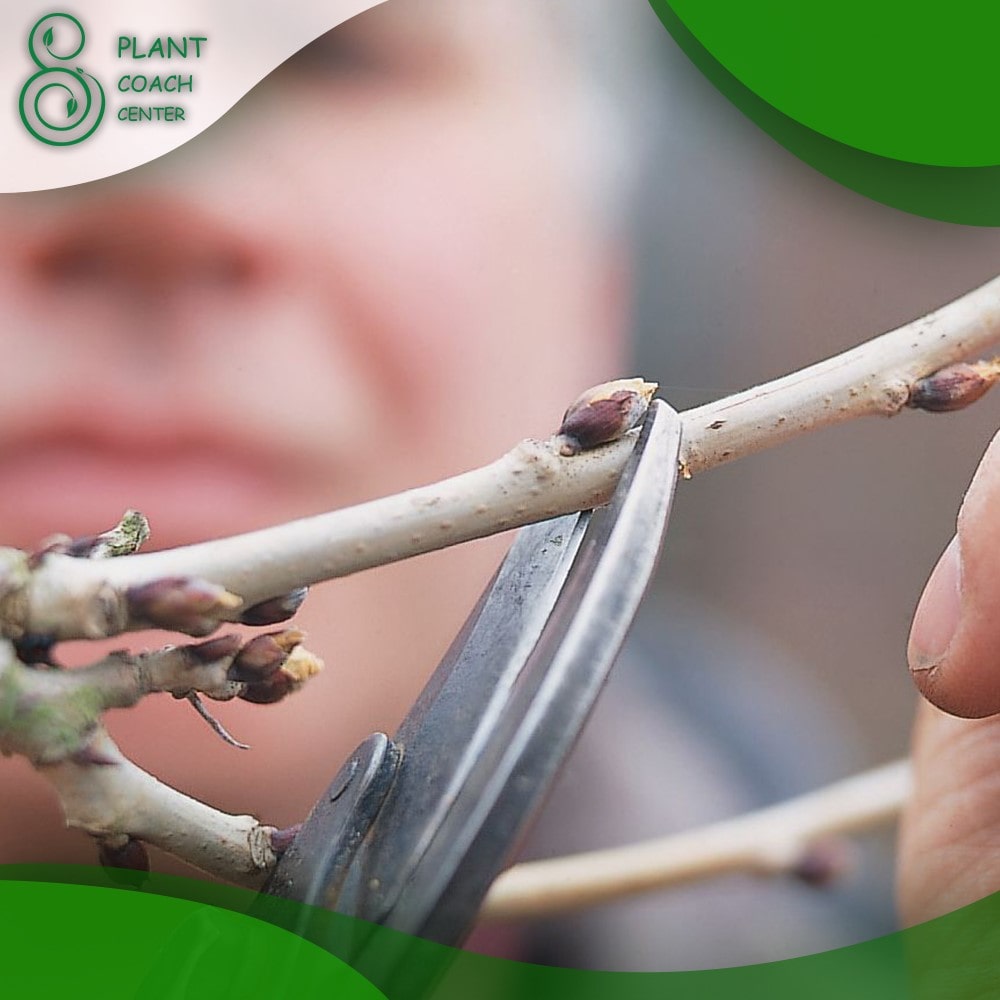When Do You Prune Wisteria?
Welcome to the enchanting world of wisteria care, where the art of pruning meets the science of nurturing. With cascading blossoms and romantic allure, Wisteria graces gardens and landscapes with an ethereal beauty that captures hearts. But as any gardener knows, this enchantment requires thoughtful tending to flourish.
Among the many secrets to cultivating a vibrant wisteria display, pruning emerges as a pivotal technique that shapes its form and enhances its stunning floral showcase. This guide delves into wisteria pruning, unraveling the mysteries behind the “when” that accompanies this horticultural practice.
From understanding the intricate dance between Wisteria’s growth phases and seasons to mastering the delicate balance between artistic manipulation and plant vitality, we embark on a journey to unlock the secrets of when and how to prune Wisteria for optimal splendor. Whether you’re a seasoned green thumb or a budding enthusiast, join us in demystifying the pruning calendar and uncovering the transformative power it bestows upon these remarkable climbers.

Unraveling the Pruning Calendar
When it comes to the art of wisteria pruning, timing is everything. A successful pruning regimen begins with a deep understanding of the plant’s growth patterns and responses to seasonal changes. Wisteria, renowned for its exuberant blooms and vigorous growth, undergoes distinct phases throughout the year, each of which influences the optimal moment for pruning.
Dormant Season Pruning
As winter’s chill descends, Wisteria enters its dormant phase. This is a prime time for major structural pruning. With the leaves gone, the plant’s bare architecture is fully exposed, allowing you to assess its form and make strategic cuts.
During this period, typically from late fall to early spring, you can trim away any unwanted or overcrowded branches, shaping the framework for the upcoming growing season. However, be cautious not to over-prune, as Wisteria sets its flower buds in the previous year’s growth.
Post-Bloom Trimming
After the spectacular spring bloom, Wisteria enters a phase of rapid growth. This is an ideal moment for a lighter touch – removing spent flower clusters, untangling vines, and tidying up the plant’s appearance. This maintenance pruning encourages new growth and prepares the plant for the next blooming cycle.
Mid-Summer Maintenance
In mid-summer, after the initial burst of growth has slowed, Wisteria can benefit from a second round of pruning. This trim helps control the plant’s size and shape, preventing it from overtaking its surroundings. Focus on trimming back excessively long shoots and maintaining the desired form of the plant.
Late Summer Caution
Avoid pruning wisteria too late in the summer, as this might stimulate new growth that won’t have sufficient time to harden before winter, leaving it vulnerable to cold damage. As the growing season winds down, it’s best to let the plant naturally transition into dormancy without significant cuts.
Pruning Techniques for Wisteria
Pruning wisteria is more than just a horticultural task; it’s a creative endeavor that allows you to sculpt living beauty into remarkable forms. As you embark on this journey of artistic manipulation, mastering the proper techniques can help you transform Wisteria into stunning arbors, trellises, and focal points in your garden.
Espalier Elegance
Espalier training shapes Wisteria into flat, two-dimensional forms against a wall, fence, or trellis. By gently guiding the plant’s branches and shoots horizontally, you can create intricate patterns that add a touch of elegance to your outdoor space. Espalier wisteria not only maximizes space but also uniquely showcases the plant’s cascading flowers.
Pergola Perfection
Pergolas draped with wisteria vines epitomize romance and charm. To achieve pergola perfection, carefully prune Wisteria to encourage upward growth, guiding its long stems along the beams and posts. By skillfully managing change and allowing select shoots to cascade downward, you can create a captivating canopy of blossoms that provides shade and serenity.
Trellis Tapestry
Wisteria on trellises offers an opportunity to create a living tapestry that intertwines beauty and structure. Train the main stem upward and encourage lateral growth to weave through the trellis framework. Prune away excess growth to maintain the desired shape while allowing the plant’s tendrils to weave their magic, forming an enchanting display of foliage and flowers.
Balancing Act
While artistic ambition drives wisteria shaping, balancing creative expression and the plant’s health is crucial. Avoid excessive pruning, as this can deprive the plant of the energy it needs to thrive. Regularly inspect for signs of stress, such as sparse foliage or diminished flowering. Remember that Wisteria’s natural grace results from its growth habit, and while you can guide it, you’re ultimately working with its inherent tendencies.

Pruning for Renewal
Picture this: a once-vibrant wisteria that has lost its luster, its cascades of blossoms now buried under a tangle of unruly vines. Don’t despair; even the most neglected Wisteria can be rejuvenated with a well-executed pruning strategy. Reviving an overgrown wisteria is a labor of love that requires careful consideration and a willingness to make bold choices.
Assessment and Courage
The first step in breathing new life into an overgrown wisteria is to assess its condition. Determine the extent of the overgrowth and identify the main structural branches that will form the foundation of the revitalized plant. Summon your courage; you’ll likely need to make drastic cuts to remove old, woody growth and crowded branches.
Radical Renovation
Radical pruning is the hero of the revival process. During the dormant season, typically in late winter or early spring, take a deep breath and remove a significant portion of the tangled mass. Cut back any branches that have strayed far from the desired shape and structure. Aim to maintain a few healthy, robust units that can become the new framework for growth.
Patience Rewarded
Understand that reviving an overgrown wisteria requires time and patience. The first year following the radical pruning might yield fewer blooms as the plant redirects its energy toward new growth. However, you’ll witness the fruits of your labor each year as the Wisteria’s renewed vigor results in healthier foliage and increasingly abundant and breathtaking blossoms.
Ongoing Maintenance
After the initial revival, consistent maintenance pruning is crucial to prevent the Wisteria from reverting to its previous overgrown state. Regularly remove spent flowers and trim back excessive growth, guiding the plant’s development along the intended lines. This ongoing care ensures that your once-neglected Wisteria remains a focal point of beauty and a testament to your dedication.

Pruning for Enhanced Flowering
The allure of Wisteria lies not only in its lush foliage but also in the breathtaking display of cascading blooms that captivate the senses. If you yearn for an explosion of vibrant flowers that defy gravity, mastering the art of pruning for enhanced flowering is your secret weapon. Through careful cuts and strategic timing, you can coax your Wisteria into producing an abundance of blossoms that will leave you and your garden visitors in awe.
Understanding the Flowering Mechanism
Before delving into pruning strategies, it’s essential to grasp how Wisteria produces its magnificent flowers. Wisteria blooms on old and new wood, meaning that flowers develop on last year’s growth and the current year’s shoots. This characteristic offers flexibility in pruning approaches without sacrificing the upcoming bloom.
Pruning for Abundant Blooms
To encourage bountiful blossoms, focus on balancing old and new growth. During the dormant season, remove dead, diseased, or weak branches to enhance airflow and sunlight penetration. Trim back long, unproductive stems to invigorate the plant’s energy towards flowering.
Selective Cutting
When Wisteria is in its post-bloom phase, consider selectively cutting back specific shoots to promote the formation of new flowering spurs. Encourage the growth of lateral branches that will bear next year’s flowers by snipping back excessive growth.
Timing Your Cuts
Timing plays a pivotal role in the flowering success of your Wisteria. After the initial flowering in spring, prune selectively to encourage new growth. Avoid heavy pruning during this phase to prevent unintentional removal of the flower buds that will bloom next year.
Consistency is Key
Pruning for enhanced flowering is an ongoing process. By consistently removing spent flower clusters and keeping the plant’s growth in check, you’ll create an environment that encourages the development of next year’s blossoms. Over time, your Wisteria will reward your dedication with a profusion of blooms that turn your garden into a floral paradise.
Common Mistakes and How to Dodge Them
Embarking on the journey of wisteria pruning is an exciting endeavor, but like any art form, it requires a steady hand and a mindful approach. While the prospect of shaping and revitalizing your Wisteria is enticing, it’s essential to be aware of the common pitfalls that can hinder your efforts. Understanding these potential missteps and learning how to avoid them can ensure that your pruning experience leads to a healthier and more beautiful wisteria.
Overzealous Pruning
Solution: One of the most common missteps is excessive pruning. Overzealous cuts can rob your Wisteria of its energy, resulting in diminished growth and sparse flowering. Prioritize selective, thoughtful pruning over aggressive trimming, and always consider the plant’s overall health and growth habits.
Improper Timing
Solution: Pruning at the wrong time can disrupt the plant’s natural growth cycle and reduce flowering. Avoid heavy pruning in late summer or fall, as this can stimulate new growth vulnerable to frost damage. Stick to the recommended pruning periods for your Wisteria’s growth phases and consult local gardening resources for specific timing cues.
Neglecting Structural Pruning
Solution
You must address the framework of your Wisteria to avoid a tangled mess that’s difficult to manage. Regular structural pruning during the dormant season is essential for maintaining a solid foundation and promoting healthy growth. Focus on removing crossing branches and keeping an open structure.
Ignoring Plant Health Signs
Solution: Pruning is not just about aesthetics; it’s also about plant health. If you notice signs of disease, pest infestations, or stress, address these issues before embarking on major pruning efforts. Pruning a compromised plant can further weaken it and hinder its recovery.
Lack of Research
Solution: Each wisteria variety may have specific pruning requirements. Neglecting to research your particular type of Wisteria can lead to poor results. Familiarize yourself with your plant’s growth habits and recommended pruning techniques to ensure success.
Skipping Regular Maintenance
Solution: Pay attention to your Wisteria’s ongoing maintenance after the initial pruning. Regularly remove spent flowers and make selective cuts to guide growth. Neglecting this step can lead to overgrowth and a reduction in flowering potential.

Wisteria Pruning for Different Varieties
With its diverse range of species and varieties, Wisteria offers a tapestry of options for gardeners seeking to infuse their outdoor spaces with its enchanting beauty. From Japanese Wisteria (Wisteria floribunda) to Chinese Wisteria (Wisteria sinensis) and beyond, each variety possesses unique growth patterns and flowering characteristics that call for tailored pruning approaches.
Understanding the distinctions between these wisteria types empowers you to harness their individual traits and elevate their presence in your garden.
Japanese Wisteria (Wisteria floribunda)
Japanese Wisteria boasts stunningly long flower clusters that drape gracefully from the vines. To coax the best display of these pendulous blooms, focus on a balance between structural pruning during the dormant season and careful management of lateral growth during the growing season. Encourage upward growth for vertical supports and channel the plant’s energy into flowering spurs by selectively removing side shoots.
Chinese Wisteria (Wisteria sinensis)
Chinese Wisteria is known for its vigorous growth and intoxicating fragrance. When pruning this variety, emphasize managing its exuberance. Regularly trim back overly long shoots to maintain a neat appearance and encourage flowering. Be mindful of overcrowding, as Chinese Wisteria’s rapid growth can lead to tangled vines that obscure its blossoms.
American Wisteria (Wisteria frutescens)
American Wisteria, native to the southeastern United States, offers a more restrained growth habit than its Asian counterparts. With shorter racemes of flowers, this variety suits smaller gardens. Prune American Wisteria moderately to maintain its shape, removing dead wood and encouraging lateral growth for a fuller appearance.
Hybrid Varieties
Hybrid Wisteria, a fusion of different species, showcases a blend of characteristics that can create a unique charm. Pruning approaches for hybrids will depend on the dominant traits inherited from their parent species. Observe these hybrids’ growth patterns, flower formations, and vigor to tailor your pruning regimen accordingly.
Trial and Observation
In the realm of wisteria pruning, flexibility and adaptability are key. While general guidelines apply to each variety, remember that your garden’s microclimate, soil composition, and other factors can influence growth. Regular observation and experimentation allow you to refine your pruning strategy over time, tailoring it to your Wisteria’s specific needs and preferences.

Conclusion
As we conclude this journey through the art of wisteria pruning, we stand at the crossroads of creativity and cultivation. Armed with the knowledge of when to prune, the techniques to shape, and the wisdom to avoid pitfalls, you’re poised to transform your Wisteria into a living masterpiece. Whether you’re revitalizing an overgrown beauty, coaxing forth a cascade of blossoms, or tailoring your approach to diverse varieties, remember that each snip of the shears is an expression of your commitment to nurturing nature’s marvels.
At PlantCouchCenter.com, our mission is to empower garden enthusiasts like you with insights that transform gardens into sanctuaries of beauty and serenity. By embracing the transformative power of wisteria pruning, you’re not just cultivating plants but developing a deeper connection to the natural world and a richer appreciation for the wonders it bestows upon us.
When should I prune Wisteria?
Prune wisteria during the dormant season for structure and after bloom for maintenance.
Can I prune Wisteria in the summer?
Selectively trim in mid-summer to manage growth and maintain the desired shape.
How to revive an overgrown wisteria?
Radically prune during dormancy, retaining strong branches for renewed vigor and flowering.







